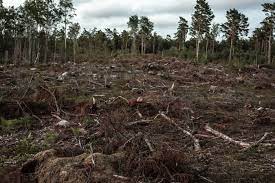Most of Sweden is still covered in forest. I have visited the country, and have enjoyed exploring it. Never the less, an alarming study has shown that most of the forestry – about 97% relies on clear cutting ancient woodland, and then replanting it with monocultures of trees, not all of which are native.

Clearly Sweden must buck its ideas up, or change fast. I have commented on the low density of bears and wolves. In the past, this has been put down to the countries large number of hunters, but perhaps this is an early warning about what is happening to these forests.
Might this hit the IKEA brand? certainly if they wish to survive, they are going to have to change their behaviour dramatically.
